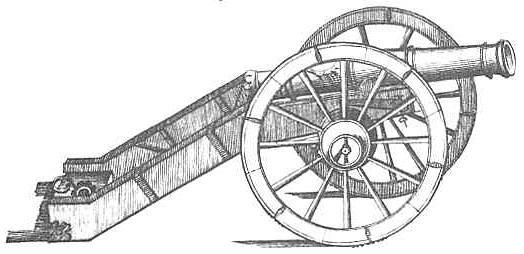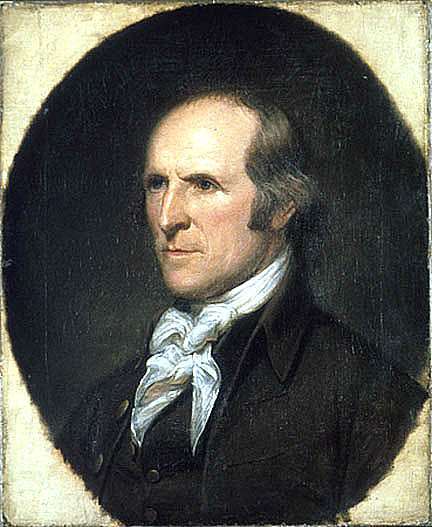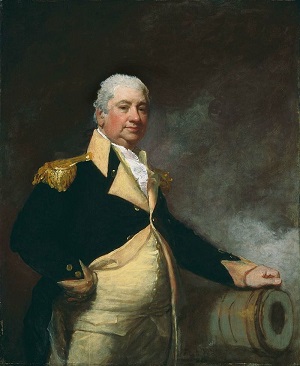Who Served Here?
General Henry Knox: Page 2

Knox was given permission to leave Valley Forge for a time to visit his family in Massachusettes, and to secure supplies for the army from the New England states. Knox returned to the encampment and assisted Steuben in his drilling of the troops, particulary the artillery men. The troops left Valley Forge on June 19 and headed for battle at Monmouth.
The following winter, 1778-79, the Army encamped in Morristown NJ, but Knox was not with it. Washington had sent his trusted Artillery officer to Massachusettes to establish an artillery battalian, tasking him with recruiting and training the men and setting up production facilities to produce the weaponry. Knox's armory in Springfield, MA was an essential source of supply and repair for the rest of the war.
Much later, Knox was sent as a representative of Washington to secure aid from the northern states in what Washington hoped would be the last campaign of the war. January 1, 1781, from New Windsor, Washington wrote Knox:
You will generally represent to the supreme executive powers of the States, through which you pass, and to gentlemen of influence in them, the alarming crisis to which our affairs have arrived, by a too long neglect of measures essential to the existence of the army, and you may assure them, that, if a total alteration of system does not take place in paying, clothing and feeding the troops, it will be in vain to expect a continuance of their service in another campaign.
Knox's persuasive powers proved successful, and he was able to secure the needed assistance.
Eventually, the British army was forced in seige at Yorktown. Knox had placed the artillery in fine strategic position. After the surrender of Cornwallis on October 19, 1781, Knox was advanced to major-general, an honor well earned.
In 1782, Knox was appointed commander of West Point, where he remained for the rest of the war. The Treaty of Paris formally ended the war on September 3, 1783. Shortly afterward, on November 21, 1783, Knox oversaw the withdrawl of British troops from New York. On December 4, 1783, the officers assembled at Fraunces Tavern to take final leave of their Commander-in-Chief. Knox was at Washington's side as he delivered his farewell.
Knox was elected Secretary at War by Congress in 1785, and in 1789 he was appointed Secretary of War in President Washington's new cabinet.
Conflicts with various groups of Native peoples primarily occupied Knox in his role as Secretary of War. Knox oversaw a government policy of steady removal of native people, including the Creek and Cherokee, from their traditional lands. He wrote to President Washington on December 28, 1794:
After having served my country nearly twenty years, the greatest portion of which under your immediate auspices, it is with extreme reluctance, that I find myself constrained to withdraw from so honorable a station. But the natural and powerful claims of a numerous family will no longer permit me to neglect their essential interest. In whatever situation I shall be, I shall recollect your confidence and kindness with all the power and purity of affection, of which a grateful heart is susceptible.

Timothy Pickering
Charrles Wilson Peale, 1793
Washington accepted Knox's resignation with regret. Timothy Pickering, who was Postmaster General at this time, was appointed the successor to Knox as Secretary of War and took office January 2, 1795.
General Knox and his family settled on an estate at Thomaston, Maine in 1796, which he called "Montpelier." He was engaged in various types of businesses during the latter part of his life such as: brick-making, cattle-raising and ship-building. He entertained numerous guests and gave some time in service to his state in General Court and Governor's Council. Washington desired to appoint Knox as a Commissioner to St. Croix, but Knox declined.
Knox died unexpectedly in 1806. He was buried in Thomaston.
Adapted from the article by Charles William Heathcote, Ph.D., The Picket Post, Valley Forge Historical Society; July 1956




